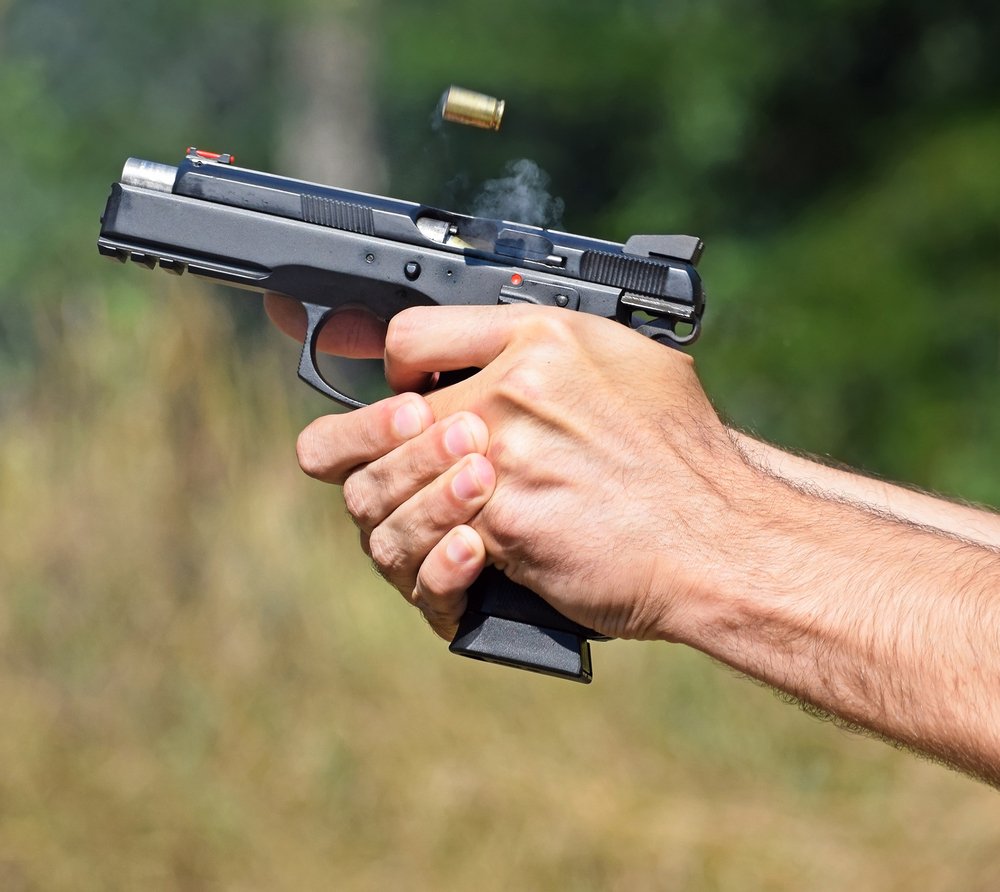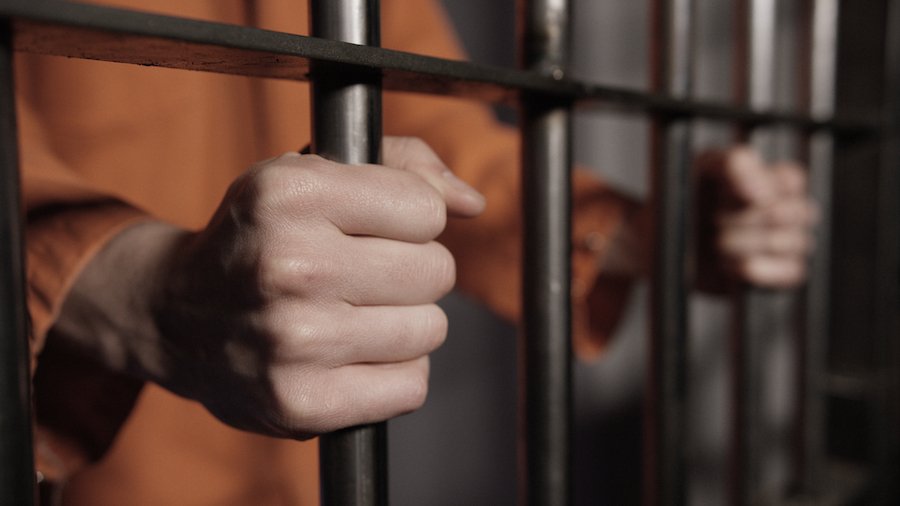ARS § 13-3107 is the Arizona statute that defines the crime of the unlawful discharge of a firearm. You commit this offense if, with criminal negligence, you shoot a firearm within or into the limits of a city or town.
A violation of this law is a Class 6 felony that is punishable by up to three years in state prison.
The language of ARS § 13-3107 states that “a person who with criminal negligence discharges a firearm within or into the limits of any municipality is guilty of a class 6 felony.”
Examples
- Shooting a gun on private property within the confines of a town.
- Firing a rifle up into the air at a town park.
- Discharging a pistol in the parking lot of a city’s private school.
Defenses
Criminal defense lawyers can draw upon a defense strategy to contest charges of unlawful discharge of firearms. For example, an attorney can show that an accused:
- did not act with criminal negligence,
- is exempt under the law, and/or
- acted out of necessity.
Penalties
A violation of ARS 13-3107 is a Class 6 felony (as opposed to a misdemeanor). The crime is punishable by custody in state prison for up to three years.
In this article, our criminal defense attorneys will discuss what the law is under this statute, defenses available if charged, the penalties for a conviction, and related crimes.

People violate ARS 13-3107 when, with criminal negligence, they shoot a firearm within or into the limits of a city or town.
1. How does Arizona law define the “unlawful discharge of a firearm”?
People in Arizona are guilty under this criminal code section if they:
- discharge a firearm within or into the limits of a municipality, and
- do so with criminal negligence.i
This law is sometimes called “Shannon’s law,” after 14-year-old Shannon Smith was fatally struck with a stray bullet while in the backyard of her Phoenix home.
For this section, “criminal negligence” means that a person fails to perceive a substantial and unjustifiable risk that a certain result will occur or that certain circumstances exist. The risk must be of such nature and degree that the failure to perceive it marks a gross deviation from the standard of care that a reasonable person would observe in the situation.ii
“Municipality” means any city or town.iii
Note that several exceptions under this statute allow a person to discharge a firearm within city limits without facing criminal charges. For example, ARS 13-3107 does not apply if a firearm is discharged:
- on a properly supervised shooting range,
- to lawfully take wildlife during an open season established by the Arizona game and fish commission,
- for the control of nuisance wildlife by permit from the Arizona game and fish department or the United States fish and wildlife service,
- by special permit of the chief of police of the municipality,
- as required by an animal control officer in the performance of his/her duties,
- using blanks,
- when the person is more than one mile of an occupied structure, and
- in self-defense or defense of another person against an animal attack.iv
Arizona courts have ruled that this law does not violate a person’s right to bear arms.v
2. Are there defenses to ARS 13-3107?
People accused of a crime according to this criminal law have the right to challenge the accusation with a legal defense. Three common defenses include defendants showing that they:
- did not act with criminal negligence.
- are exempt under the law.
- acted out of necessity.
2.1 No criminal negligence
Recall that people are only guilty under this law if they shot a firearm and did so with criminal negligence. A defense is for an accused to show that he/she did not act in this manner. For example, a person might have a handgun that he/she thought was unloaded and fired it by complete accident.
2.2 Exempt under the law
Also, recall several exceptions under this statute where a person can discharge a firearm and still avoid guilt. This means it is always a defense for a person to say that his/her actions fell under one of these exceptions.
2.3 Necessity
Under a necessity defense, a defendant tries to avoid guilt by showing that he/she had a good reason to commit a crime. In discharging a firearm, an accused could attempt to show that he committed the crime since he had no other choice (for example, because of an emergency).

A conviction under this law can result in a prison sentence.
3. What are the penalties?
A conviction under ARS 13-3107 is a felony offense. In particular, a conviction is a Class 6 felony.vi
The crime is punishable by a prison sentence of four months and two years.
If a defendant discharges a deadly weapon, the crime is considered a dangerous offense and is punishable by a prison sentence of one year, six months and three years.
4. Are there related offenses?
There are three crimes related to the unlawful discharge of a firearm. These include:
- aggravated assault – ARS 13-1204,
- disorderly conduct – ARS 13-2904, and
- negligent homicide – ARS 13-1102.
4.1 Aggravated assault – ARS 13-1204
Per ARS 13-1204, aggravated assault is the crime where someone:
- assaults another person, and
- does so by means of certain aggravating factors (for example, assaulting someone with deadly or concealed weapons).
Aggravated assault is considered a more severe crime than the unlawful discharge of a firearm and can lead to a Class 2 felony charge.
4.2 Disorderly conduct – ARS 13-2904
Under ARS 13-2904, disorderly conduct is the offense where someone:
- knowingly engages in a certain type of disruptive behavior (like making loud noise or using offensive language), and
- does so with the intent to disturb the peace or the quiet of a neighborhood, family, or a person.
Unlike with this statute, ARS 13-3107 does not require that a person act while knowing that he/she is breaking the law. The statute only requires that a person act with criminal negligence.
4.3 Negligent homicide – ARS 13-1102
Under ARS 13-1102, negligent homicide is the crime where someone causes the death of another person by means of a criminally negligent act.
Note that if someone shoots a gun in public, and the stray bullet kills someone, a police officer/law enforcement agent can likely charge the shooter with both:
- unlawful discharge of a firearm, and
- negligent homicide.
Legal References
- Arizona Revised Statutes 13-3107 Subsection A. The full language of the code section reads as follows:
A. A person who with criminal negligence discharges a firearm within or into the limits of any municipality is guilty of a class 6 felony.B. Notwithstanding the fact that the offense involves the discharge of a deadly weapon, unless a dangerous offense is alleged and proven pursuant to section 13-704, subsection L, section 13-604 applies to this offense.
C. This section does not apply if the firearm is discharged:
1. As allowed pursuant to chapter 4 of this title.
2. On a properly supervised range.
3. To lawfully take wildlife during an open season established by the Arizona game and fish commission and subject to the limitations prescribed by title 17 and Arizona game and fish commission rules and orders. This paragraph does not prevent a city, town or county from adopting an ordinance or rule restricting the discharge of a firearm within one-fourth mile of an occupied structure without the consent of the owner or occupant of the structure. For the purposes of this paragraph:
(a) “Occupied structure” means any building in which, at the time of the firearm’s discharge, a reasonable person from the location where a firearm is discharged would expect a person to be present.
(b) “Take” has the same meaning prescribed in section 17-101.
4. For the control of nuisance wildlife by permit from the Arizona game and fish department or the United States fish and wildlife service.
5. By special permit of the chief of police of the municipality.
6. As required by an animal control officer in the performance of duties as specified in section 9-499.04.
7. Using blanks.
8. More than one mile from any occupied structure as defined in section 13-3101.
9. In self-defense or defense of another person against an animal attack if a reasonable person would believe that deadly physical force against the animal is immediately necessary and reasonable under the circumstances to protect oneself or the other person.
D. For the purposes of this section:
1. “Municipality” means any city or town and includes any property that is fully enclosed within the city or town.
2. “Properly supervised range” means a range that is any of the following:
(a) Operated by a club affiliated with the national rifle association of America, the amateur trapshooting association, the national skeet association or any other nationally recognized shooting organization, or by any public or private school.
(b) Approved by any agency of the federal government, this state or a county or city within which the range is located.
(c) Operated with adult supervision for shooting air or carbon dioxide gas operated guns, or for shooting in underground ranges on private or public property.
- ARS 13-105(10)(d).
- ARS 13-3107D1.
- ARS 13-3107C.
- City of Tucson v. Rineer, 193 Ariz. 160 (1998).
- ARS 13-3107A.
